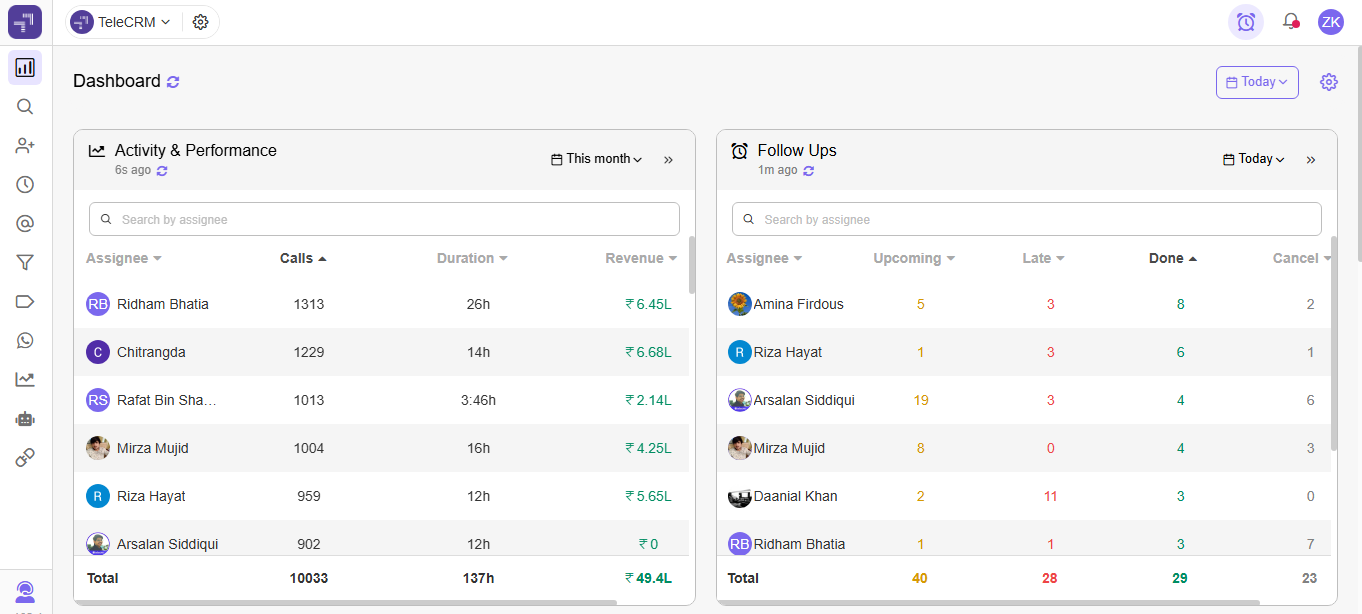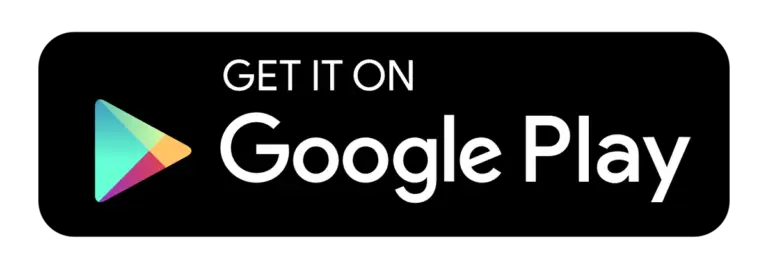
Every day, you pick up the phone, dial and face rejection after rejection. Fake numbers, “call me later” and rude replies seem to be part of the job. You follow scripts that don’t always hit the mark and work with targets that don’t care how you feel.
But despite all that, you keep going. Because when it clicks — the lead listens, your pitch works and the sale closes — it’s all worth it.
The truth is, successful telecalling isn’t just about confidence or being good with words. It’s about skill. Real, practical skills like how to hook a lead in the first 7 seconds, how to handle objections without freezing and how to keep track of every follow-up without missing a beat.
In this blog, we’ll break down the exact telecaller skills you need to go from just making calls to actually closing deals. Whether you’re new to telecalling or want to sharpen your edge, you’ll learn how to take control of your calls and how tools like Telecrm help you do it faster, better and smarter.
If you’re serious about improving your telesales practice, this is where you start.
Telecaller skills are the core abilities that help you connect with a prospect, build interest and move them toward a decision — all through a phone call. These combine communication skills, persuasion skills, product knowledge and emotional intelligence to help you make every call count.
A telecaller’s job description is that they don’t have the liberty of having face-to-face customer interactions, and this is what makes the job even harder. Because you don’t have their full attention and often get just a few seconds to make an impression, these skills are what separate average callers from top performers.
Think about it:
This is what telecalling skills are all about—handling pressure, thinking on your feet and knowing exactly what to say, when to say it and how to say it.
And like any skill, they can be learned, improved and mastered over time. In the next section, we’ll break down the most important ones that every telecaller should focus on to consistently hit targets and grow in their career.
Now that you know what telecaller skills are, the next question is — which ones actually make a difference? What do top-performing telecallers do differently from the ones who are just clocking in and making calls?
The best telecallers do a few simple things really well:
In this section, you’ll learn the 20 most important telecaller skills that help you go from just talking to actually converting. These are practical, real-world telecalling skills that you can start using right away — and once you do, you’ll see the difference not just in your confidence, but in your numbers too.
Pre-call research is your secret weapon. Today, every potential client gets 10+ cold calls a day, and knowing even one unique detail about them helps you stand out. It shows you respect their time and you’re not just another salesperson with a telecalling script.

Whether you’re calling a sales manager at a startup or directly to the owner of a small business, a little context helps you ask smarter questions, handle objections better and pitch more relevant benefits.
Pro tip: Create a habit loop — before every call, spend 60–90 seconds scanning the CRM and LinkedIn. Over time, this habit will dramatically improve your call success rate.
The first few seconds of a call can make or break the conversation. If the person feels even a bit uncomfortable, disinterested or confused, the call’s already halfway to a dead end. Rapport is what stops that from happening — it makes the person want to stay and hear you out.

Once you’ve built initial rapport, your next challenge is to hook the listener quickly. A strong opening line sets the tone for the entire call. If it feels generic or scripted, the lead checks out mentally (or literally hangs up). But if it sparks curiosity or feels immediately relevant, they stay.
You don’t need to be flashy — just relevant, sharp and confident.

Address the lead directly
“Hi Raj, I’ll keep this super quick—just wanted to check if you’re still handling hiring at BloomTech?”Sets clear expectations
“Quick call, just a couple of questions to see if this is even relevant for you.”It references something specific
“I saw your team recently opened a new office in Pune—how’s that rollout going?”It makes them curious
“Most founders I speak with are trying to cut down lead leakage. Is that something you’re also seeing?”The goal isn’t to impress — it’s to spark interest. Make the lead think, “Okay, this sounds relevant. I’ll give them a minute.”
You can have the smoothest voice and the best pitch, but if you don’t truly understand your product, you’ll lose the potential customer the moment they ask a real question.
Telecalling shouldn’t be about reading off a brochure — it’s always about being able to explain the product in plain terms, adapt your pitch to different situations and handle objections without fumbling. That only happens when you understand what you’re selling inside out.

Replace features with benefits:
Instead of “We have automated workflows,” say “It saves your team hours by automatically following up with prospective clients even when you’re off the clock.”
Be ready to explain it like you’re talking to someone totally new:
“Think of it like a personal assistant that reminds you who to call, when and what to say.”
If you don’t know the answer, don’t fake it:
“Good question. Let me check with my team and get back to you on that.” That builds more trust than guessing.
Most telecallers focus on what they’ll say next. Experienced telecallers focus on what the lead is saying right now. Active listening means you’re fully present — not interrupting, not jumping ahead, but truly understanding what the person is trying to say.
This skill helps you uncover the real problem, handle objections better and make the lead feel heard. And when someone feels heard, they’re far more likely to trust you — and buy from you.

Pro tip: The more you listen, the less you’ll have to convince. Let the lead tell you what they need—then just match your pitch to that.
No matter how great your pitch is, objections are part of every sales call. “It’s too expensive,” “We’re not interested,” or “Call me next month” — these aren’t rejections, they’re requests for clarity or reassurance.
Your job isn’t to fight these objections — it’s to understand where they’re coming from and respond calmly and confidently. When you handle objections well, you don’t just make a sale — you build trust.

Stay calm and don’t argue: Objections aren’t personal. Reacting emotionally or defensively will only push the lead away.
Acknowledge, then respond: Let them know you hear them.
“Totally understand. A lot of our current clients felt the same at first.”
Dig deeper: Ask a question to understand the real concern.
“Just to clarify — when you say it’s expensive, are you comparing it to something specific?”
Offer relevant value: Once you know the concern, show how your product solves it. Keep it short and clear.
“It’s too expensive”
“I hear you. But most of our users actually end up saving time and cost because they no longer lose hot leads in follow-ups.”
“We already use another tool”
“Makes sense. Just out of curiosity — what’s one thing you wish that tool did better?”
“Send me the details over WhatsApp”
“Sure — I’ll send a quick overview. But if it’s alright, can I take 30 seconds now to explain the key difference?”
Pro tip: Make a list of the top 5 objections you hear often. Write down your best counter for each and practise them until they feel natural.
One-size-fits-all doesn’t work in telecalling. What works for a real estate agent might fall flat with an edtech founder. Customised pitching is about shaping your message to match the lead’s needs, role and pain points — in real time.
When your pitch feels relevant, the lead pays attention. When it sounds generic, they tune out.

Use their industry context:
“Most coaching centres we work with struggle to follow up with enquiries during peak seasons. Does that happen at your end too?”
Address their role-specific problems:
For a founder: Talk ROI, automation and team visibility
For a salesperson: Talk speed, ease of use and lead follow-up
For a marketing person: Talk lead conversion, tracking and campaigns
Match your tone to the lead’s profile:
Use formal tone for CEOs and decision-makers
Be more casual and friendly with ground-level users or junior roles
Example: “This helps your team respond faster and close more leads without adding pressure.”
Pro tip: Build 3–4 mini pitch templates based on common lead types. That way, you’re never caught off guard, but your pitch still feels personal.
You’ve built rapport, made your pitch and handled objections — but if you don’t clearly tell the lead what to do next, the call goes nowhere. A good CTA moves the lead forward and makes your marketing and sales efforts fruitful. A weak or vague one leaves them confused or stalling.
Your job is to make the next step easy, specific and non-threatening.

Pro tip: Practice 3 CTA variations that you can use based on the lead’s interest level—low, medium and high intent. That way, you always stay in control of the direction
The real magic in sales often happens after the first call. The majority of leads won’t commit right away — not because they’re not interested, but because they’re busy, distracted or simply not ready. That’s why smart, consistent follow-ups are what separate average telecallers from top performers.
But here’s the catch: if your follow-ups are lazy, pushy or generic, they’ll do more harm than good.

Pro Tip: Use a cold calling software to keep track all past interactions and follow up more effectively.
Pro tip: Make every follow-up feel like part of the same conversation — not a new one. Use lines like:
“Just picking up from where we left off…” or “Quick reminder—should I go ahead and send the pricing breakdown you asked for?”
If you’re calling all day and talking to dozens of people, it’s impossible to remember who said what. That’s where CRM (customer relationship management) software come in. One of the traits of a good telecaller is not just making calls — they stay organised, update every lead and always know the next step.

Think of your CRM software as your personal assistant. It reminds you who to call, when to follow up and what the lead said last time. If you don’t use it properly, you’ll end up calling hot leads too late or forgetting important details.
A little CRM discipline each day keeps your pipeline clean and your conversions going. You’ll always know where things stand and what needs to happen next.
Even if you’re great at talking to leads, you can’t grow without systems that support your workflow. That’s where Telecrm steps in. It gives you everything you need to stay on top of your calls, follow-ups and excellent customer engagement — without juggling multiple tools.

Here’s how Telecrm makes your work faster and easier:
Whether you’re a team of 3-4 callers or managing a full-size sales team (20+), Telecrm gives you a clear system to act on your telecaller skills and get better results.
At the end of the day, telecalling isn’t just about how many calls you make or how fantastic your communication skills are — it’s about how well you handle each one. You know what to say, when to listen and how to follow up, everything changes.
With the right tools, like Telecrm, backing you up, staying on top of your leads, taking regular follow-ups and providing excellent customer service becomes a whole lot easier.
Start using these skills, keep practising and you’ll see the difference — not just in your numbers, but in how confident you feel on every call, which provides better customer satisfaction and positive customer feedback
Ready to put these skills into action with a tool that makes your job easier?
Book a free demo with Telecrm today and see how it can help you call smarter, follow up faster and close more deals — without the chaos.


© Copyright 2025 Telecrm.in - All Rights Reserved • Privacy Policy • T&C


© Copyright 2025 Telecrm.in - All Rights Reserved • Privacy Policy • T&C